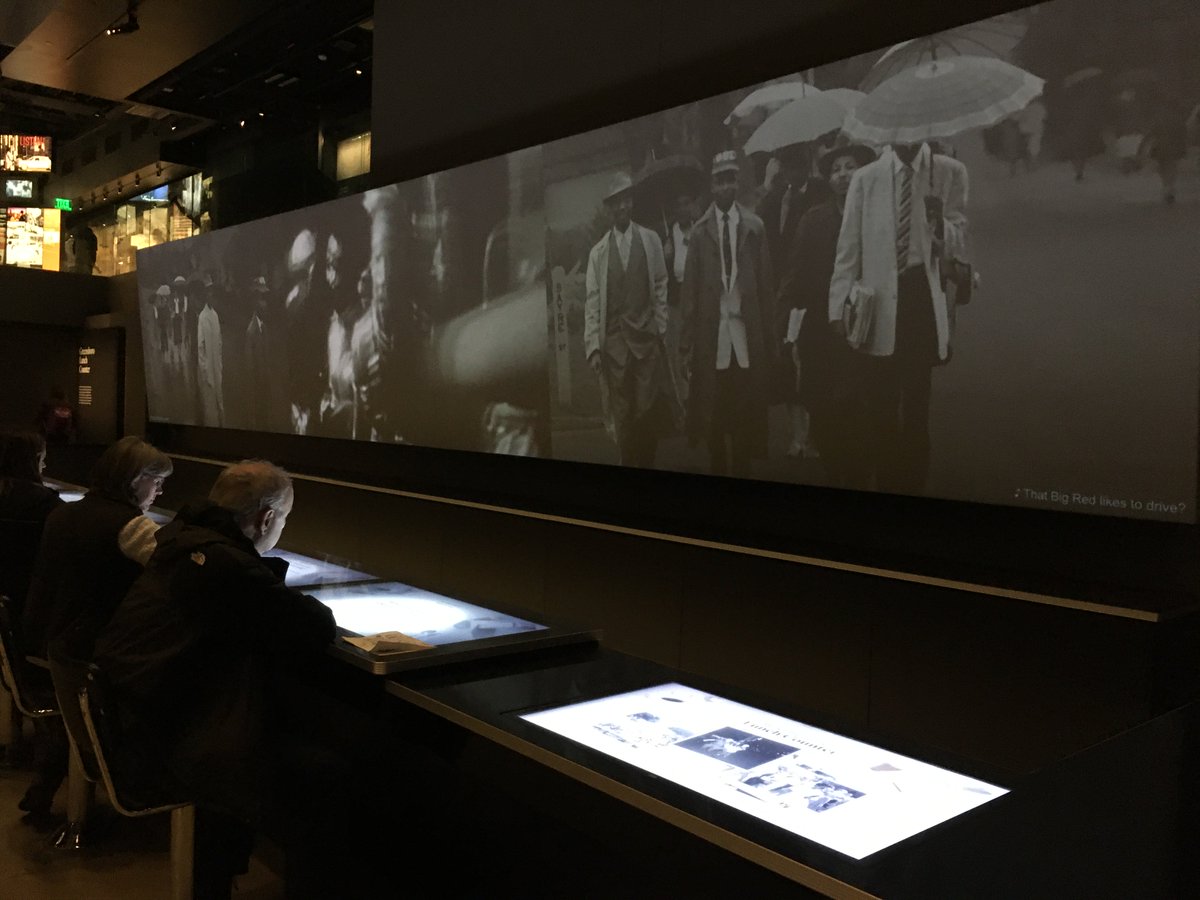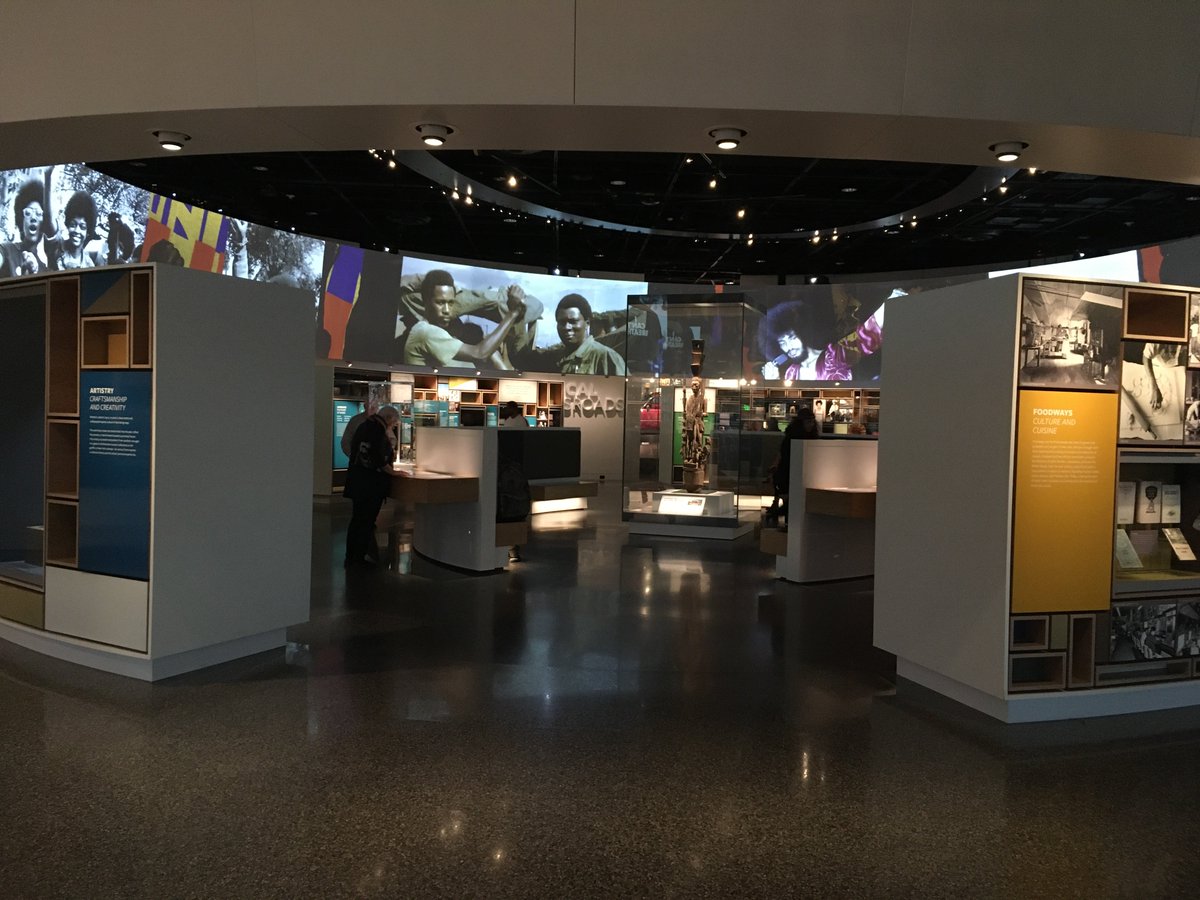It& #39;s Tuesday which means it must be Washington D.C. Today, I went to this extraordinary place @NMAAHC I took a zillion photos, spent 4 hrs (which felt very rushed), so just sharing the briefest(!) summary 1/ #ITweetMuseums
It is monumental. The way it claims space on Constitutional Ave for African-American History and Culture is communicated loud and clear to visitors - look at the halls, the height, the views, the escalators! 2/
If you are interested in contemporary collecting, then @NMAAHC has some great short films about their practice on YouTube, but visitors can find a little bit about practice and process before going into the main galleries 3/
I& #39;m not a fan of entering main galleries via a single lift controlled by a member of staff, which is what you do here, but as the glass lift goes down significant years in African-American history go past, giving a sense of a long history. 4/
The early History Galleries focus on Slavery and the transformation of people& #39;s lives. Lots of individual stories that bear witness. The ceiling are low and the rooms are cramped which emphasise a feeling of confinement and oppression. 5/
Then from US War of Independence into this - incredible space - you can walk freely again. Jefferson& #39;s racism and slave ownership is powerfully interpreted - his pen as a tool of slavery - behind him the names of enslaved African-Americans on the building blocks of the nation 6/
I& #39;m also not a fan of models, but these are incredible. Behind Jefferson are the stories of African-American women and their leadership for justice - Elizabeth Freeman. One of the museum& #39;s aims expressed throughout in the interpretation is to highlight women 7/
There are lots of large scale screen for images and short videos and lots of mini-theatre spaces throughout, also on every floor spaces for people to record their stories and add to the archive 8/
The room dedicated to segregation is expertly curated (as is the rest of the museum), the strength of the language used and the sensitively with which horrific visual records (esp. lynching of young men) is tackled is something I learned a lot from 9/
Then a wall of dilemma-based interactives that support ideas of activism and being allies (you can also see how others voted) Moving images behind the interactive and the words of activists including Dr Martin Luther King make this an emotional undertaking 10/
After the History Galleries you are advised to take some time out in the Contemplation space before moving to the contemporary galleries. You are asked not to take photos (this is a promotional image) and consider what you have experienced and to recharge. No words adequate 12/
Now I am rushing as I spent 3 hrs in the History Galleries. I saw many people school kids to retirees going at the same pace. I didn& #39;t read and look at every element - this is a life-long resource to keep coming back to, to learn from. So to the Community Galleries 13/
Sport - African American spaces for success and achievement and the racist stereotypes associated with Black athletes is just brilliantly done here with videos including sociologists and sports commentators 14/
Then a large central space on Place-making told through many different communities of place including early days of hip-hop (I was singing along and remember Friday night break-dancing challenges at my local disco at this point) 15/
Then finally the Culture Galleries. Objects, and spoken word told via films that encircled the space 16/
The films  https://abs.twimg.com/emoji/v2/... draggable="false" alt="😍" title="Smiling face with heart-shaped eyes" aria-label="Emoji: Smiling face with heart-shaped eyes">17/
https://abs.twimg.com/emoji/v2/... draggable="false" alt="😍" title="Smiling face with heart-shaped eyes" aria-label="Emoji: Smiling face with heart-shaped eyes">17/
The achievements of individuals, surrounded a central case dedicated to a single object expressing ideas of Africa as a cultural source 18/
The way positionality was discussed throughout the museum was brilliantly done. Here, a film uses the individual experiences of many people to think through the politics of colour 19/

 Read on Twitter
Read on Twitter



























































